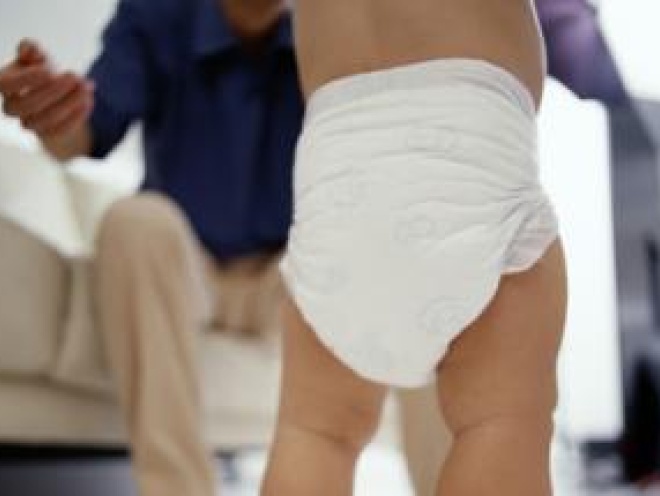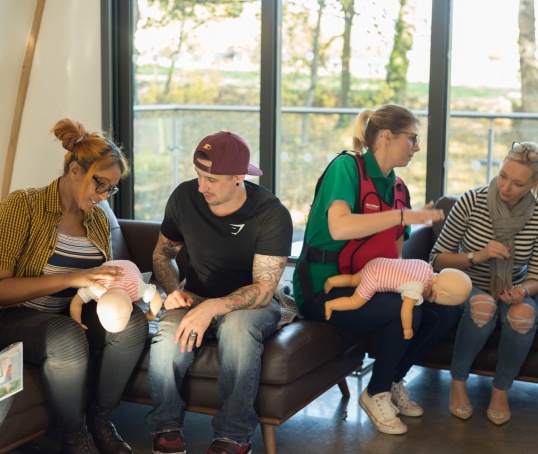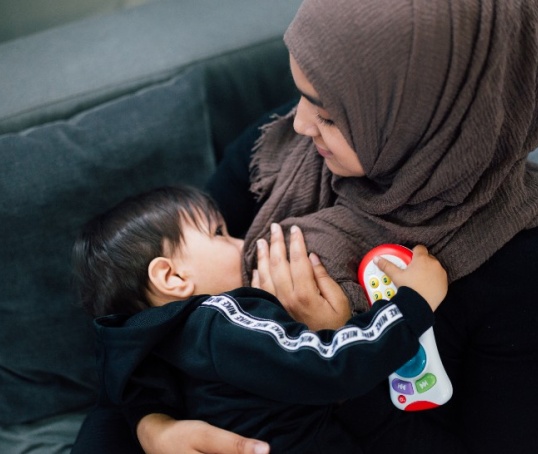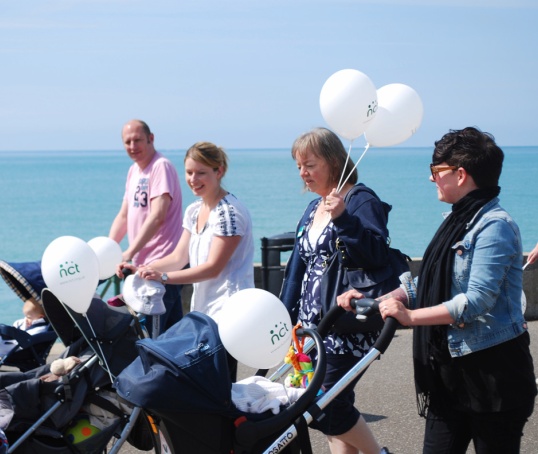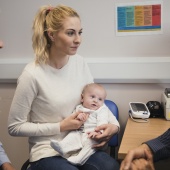Find out more about developmental dysplasia of the hip (DDH), symptoms, treatment and pavlik harnesses here.
In this article:
Developmental dysplasia of the hip (DDH) (sometimes referred to as congenital hip dysplasia (CDH) or ‘clicky hips’), is a condition where the baby’s ball and socket hip joint fails to develop fully and doesn’t fit snugly together. This condition affects 1 to 3% of newborns. However, if your baby is affected, the sooner this condition is identified the more likely it is that treatment will be successful. If treatment is delayed, it can become more complex, with less chance of success.
Hip dysplasia symptoms: Checking for DDH
As soon as your baby is born her hips will be checked almost immediately by the midwife and then later at her six to eight-week check-up as part of a national screening programme called the Newborn Infant Physical Examination (NIPE). (In some areas of the UK this examination will also include her first immunisations.) Her hips will then also routinely be checked at eight months and two years. During the examination, the healthcare professional will check to see:
- How your baby holds her legs at rest,
- If they are the same length and lie in a similar position, and
- Whether the natural thigh creases at the groin are symmetrical.
Laying your baby on her back they will move her hips gently outwards. A distinctive ‘clunk’ (which can be felt but not heard) may suggest a possible abnormality and the joint could be classed as unstable. It is important to bear in mind that a clicky hip can be entirely normal and may well stabilise itself in the following weeks.
However, if some instability is identified, then your baby’s hips should be checked again within two to three weeks by an ultrasound. Most hips will stabilise within this period, but a few don’t and will need treatment.
Are some babies more at risk of hip dysplasia than others?
The actual causes of this condition are not clear and it can affect any baby, but some factors may increase its likelihood. If your baby is more at risk, then their hips will automatically be given an ultrasound examination within six weeks. The factors which may increase the risk of your baby developing DDH include:
- A close family history of DDH or hip problems that came on early in childhood.
- A baby which was born in the breech position:
- At or after 36 weeks of pregnancy, even if the baby turned round, and was then delivered head first.
- Born before 36 weeks in a breech position.
- In a multiple birth.
DDH is more likely to occur:
- In first pregnancies.
- If there is a deficiency of amniotic fluid in the womb.
- If your baby has a mild foot abnormality or tortorticollis, a tightness of the muscles on one side of the neck.
- If there is a parent, brother or sister of the baby with DDH, the risk will increase.
Signs of DDH in older babies
Sometimes, however, in spite of these tests some hip problems may not be picked up. During pregnancy, your body will produce the pregnancy hormone ‘relaxin’, which will soften and relax your ligaments, enabling your pelvis to move and make more room for your baby during birth. These relaxing hormones can stay in your baby’s blood stream for a few weeks, making it normal for her hips to be ‘stretchier’ and looser shortly after birth. Therefore, any problems may not be detectable until sometime after her initial check-up. However, indications that your baby may have DDH include:
- Deep unequal creases in the thigh.
- When changing her nappy one leg does not seem to move outwards as fully as the other.
- She will crawl, dragging one leg.
- Her legs will be of unequal length.
- She will limp if one leg is affected or abnormal ‘waddling’ walk if both hips are affected.
- When walking she may walk on her toes of the affected side, rather than her feet.
DDH treatment
As with most conditions, early detection and treatment is important. The aim of the treatment is to relocate the ball of the femur into the hip socket. Then, as the baby grows and develops, her hips will do so normally. However, depending on when it’s detected, and how severe the condition is, treatment may vary. The most common treatments include:
- Early diagnosis
- Pavlik harness – this device, often referred to as a ‘splint’, will keep her hips in the correct position. It is most often used in children under six months old, and is usually worn for at least six weeks full-time and six weeks part-time in young babies. Older babies may have to wear it for longer.
- Late diagnosis - Harness or splint treatment is much less successful if it is started after the age of six to eight weeks. Therefore, if the diagnosis comes after that then firmer methods are required to keep the hip in place.
- Plaster cast - After being anaesthetised, a doctor will position the hip in the correct way and then apply a special plaster cast so that it is held safely in the correct position. The cast will be kept on for at least 12 weeks.
Nearly all babies who are diagnosed with DDH go on to have a healthy, active life, with no disability.
Healthy hips
While the causes of DDH are not clear, the International Hip Dysplasia Institute (IHDI) posts some recommendations as to what you can do to ensure you protect your baby’s hips during their development and provides guidelines on ‘Hip healthy swaddling’ along with car seat positioning, baby harnesses and slings.
Further information
Our support line offers practical and emotional support with feeding your baby and general enquiries for parents, members and volunteers: 0300 330 0700.
You might find one of our NCT New Baby courses helpful as they give you the opportunity to explore different approaches to important parenting issues with a qualified group leader and other new parents in your area.
Make friends with other parents-to-be and new parents in your local area for support and friendship by seeing what NCT activities are happening nearby.
Steps, a charity concerned with lower limb conditions, has information on Developmental Dysplasia of the hip.
NHS has information on its Newborn and Infant Physical Examination Programme (NIPE).
More technical information on DDH is provided by British Medical Journal (BMJ).
The International Hip Dysplasia Institute has information on ‘hip-healthy swaddling’.
